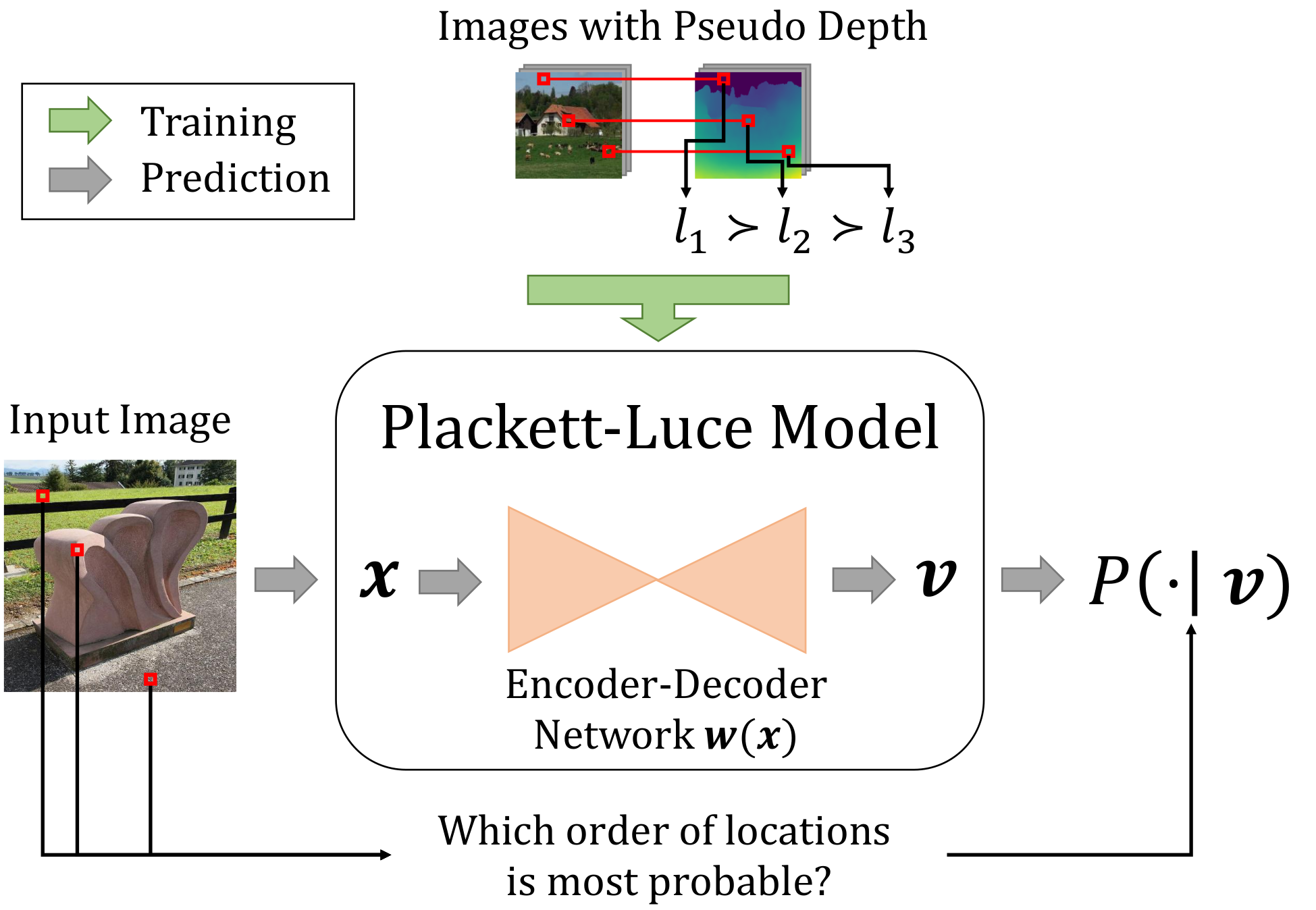A Tensorflow 2.* implementation of the Plackett-Luce model for monocular depth ranking as presented at CVPR 2021.
Please cite this work as follows:
@InProceedings{Lienen_2021_CVPR,
author = {Lienen, Julian and H\"ullermeier, Eyke and Ewerth, Ralph and Nommensen, Nils},
title = {Monocular Depth Estimation via Listwise Ranking Using the Plackett-Luce Model},
booktitle = {Proceedings of the IEEE/CVF Conference on Computer Vision and Pattern Recognition (CVPR)},
month = {June},
year = {2021},
pages = {14595-14604}
}
A detailed list of requirements can be found in requirements.txt. To install all required packages (we recommend to create a virtual environment), one simply has to call
pip install -r requirements.txt
Note that the code has been tested with Python 3.8 on Ubuntu 20.04. Since we tried to avoid using any system-dependent call or library, we expect the code to be running also on other systems, such as Windows and MacOS. Possibly, path delimiters must be changed to run on non-unixoid systems.
In some cases, we've experienced issues with the MySQL adapter package for Python 3.* (used to store experimental results using Mlflow), for which the pip package install was not sufficient to run the code. On Linux systems, this package may require to install additional system-dependent sources (e.g., for Ubuntu, we also had to run sudo apt install build-essential python-dev libmysqlclient-dev).
This repository provides our PLDepth{Eff,Res}Net training implementation, together with the code used for evaluation. The following list gives a more detailed overview over the individual packages that this repository contains:
pldepth.dataprovides data access objects, implementations to retrieve rankings from depth data and more I/O related code.pldepth.lossesprovides the implementation of the used ListMLE loss function.pldepth.modelsincludes the regarded model architectures, namely the ResNet- and EfficientNet-based models.pldepth.utilcontains utility functions used throughout the project.
A basic configuration file is given by conf/run.ini. Here, Mlflow parameters, logging settings and data paths for each dataset can be specified. Its worth to note that the CACHE_PATH_PREFIX specifies a location to which all intermediate results should be stored. Within our experiments as described in the paper, we used the dataset HR-WSI.
The repository's entry point is pldepth.PLDepth.py, which can be run in order to train a PL model for depth estimation. For our implementation, we used Click to provide a convenient CLI for passing parameters. Therefore, you can print out all possible program arguments with the --help parameter.
As an example, the following command trains a Plackett-Luce model for depth estimation based on the proposed EfficientNet-based architecture (similar to the one used within our evaluation):
python3 pldepth/PLDepth.py --model_name ff_effnet --ranking_size 5 --initial_lr 0.0001 --seed 0
[1] Ranftl, René, et al. "Towards robust monocular depth estimation: Mixing datasets for zero-shot cross-dataset transfer." IEEE Transactions on Pattern Analysis and Machine Intelligence (2020).
